
Star Wars: Shatterpoint is a tabletop skirmish game from Atomic Mass Games that gives players the opportunity to create the Star Wars battles they’ve always dreamed of. How would Anakin fare against Maul? What if Captain Rex commanded a unit of B1s? Can Darth Vader defeat his younger self? Shatterpoint is a skirmish game, but every game tells the story you create. It’s also a hobby game that will require some work to get into. Let’s find out if it’s worth it.
Shatterpoint is sold as a core set and squad expansions. You’ll need the core set to play, so don’t pass that up. Inside the box, you’ll find quite a bit of stuff: 16 miniatures and a terrain set on sprues and of course, all of the cards, tokens, and dice you need to play the game. Everything you need for two players to get into the game is included, so trying it out with a friend is easily doable.
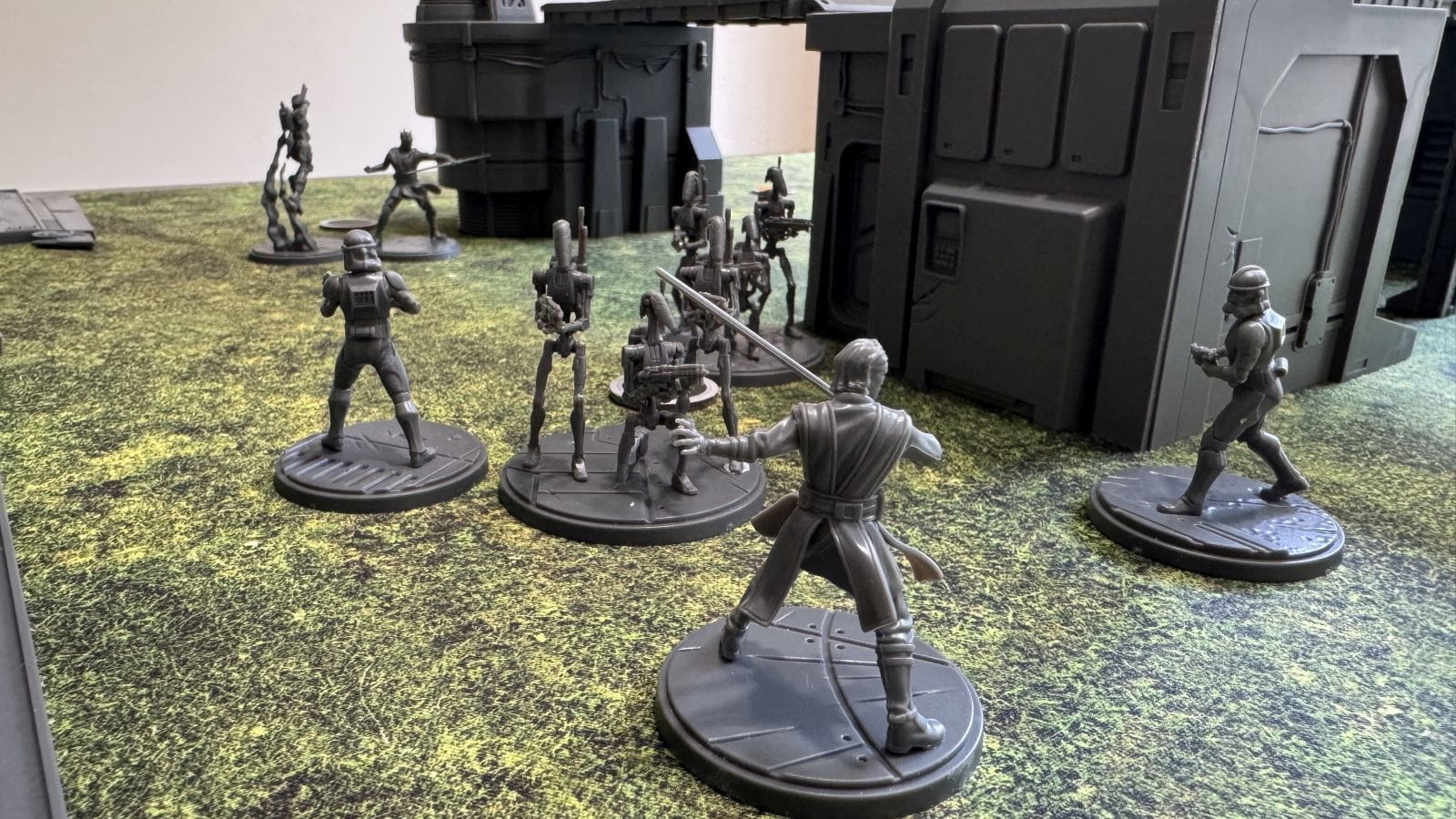
A game of Shatterpoint is played via two Strike Teams fighting over objectives called Struggles. Before you can fight, you’ll need to build your team. A Strike Team is made up of two Squads, which are in turn made up of a Primary Unit, a Secondary Unit, and a Supporting Unit. The core set comes with enough miniatures for two complete Strike Teams, with some Mandalorian mercenaries added in for some squad-building flexibility. There is no restriction on who can be together in a Strike Team, but within a Squad, units must all be from the same era (Clone Wars for example).
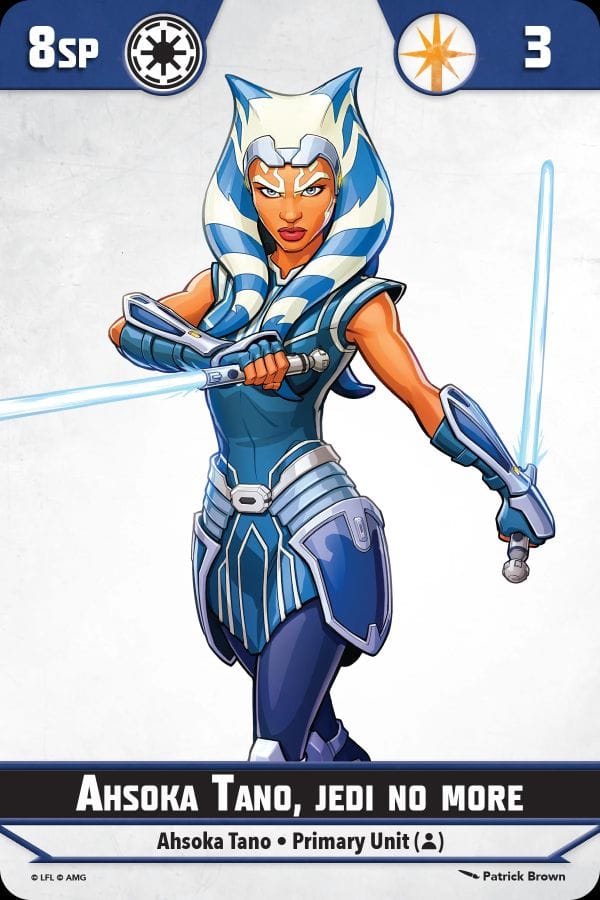

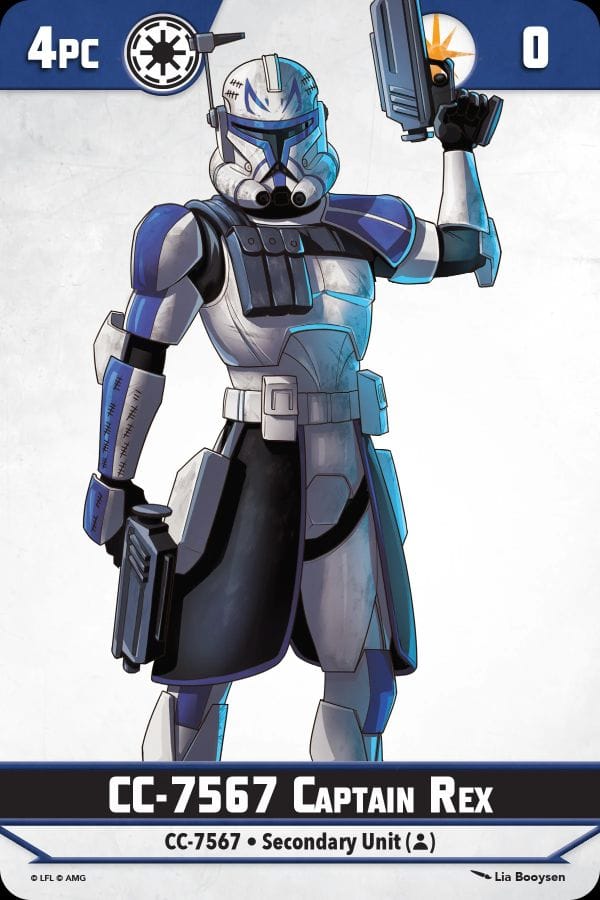
Primary units are the heroes and villains you’d expect. In the core set, you’ll find Anakin Skywalker and Ashoka Tano representing the Galactic Republic/good guys and Darth Maul and Asaj Ventress for the Separatist Alliance/Bad guys. Secondary units are notable characters like Captain Rex, Jango Fett, Gar Saxon, or Bo Katan. Supporting units are the rank and file soldiers like B1 Battle Droids, Clone Troopers, Magma Guards, or Mandalorians. You can mix and match units with a lot of freedom, but most units feature keywords that make them better when paired with the units they would thematically go with. The use of keywords is a great way to allow freedom but encourage thematic squads that enhance the overall game experience. Sure, you could have Darth Maul, Captain Rex, and B1s in a Squad together but it would just be wrong, ya know?
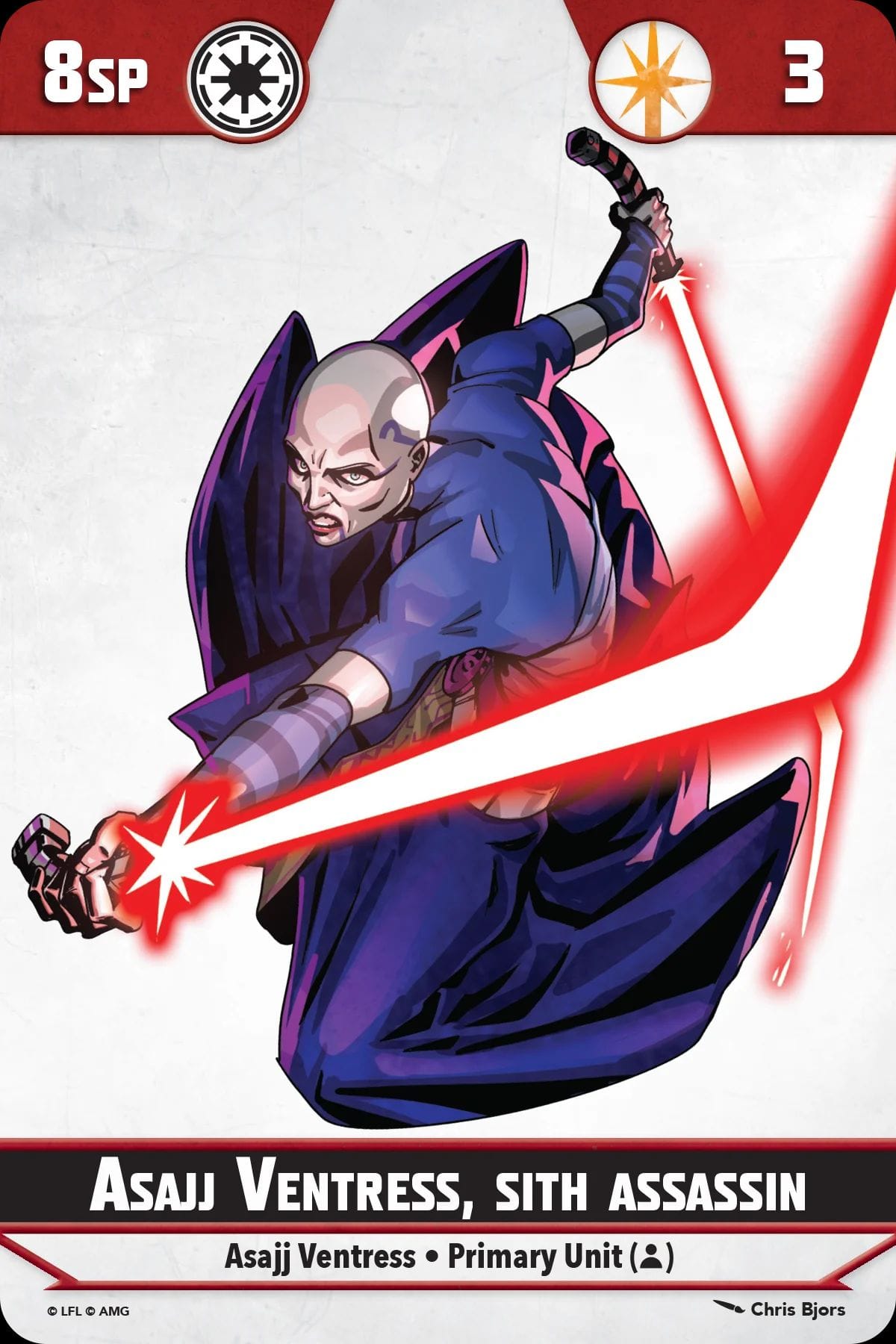
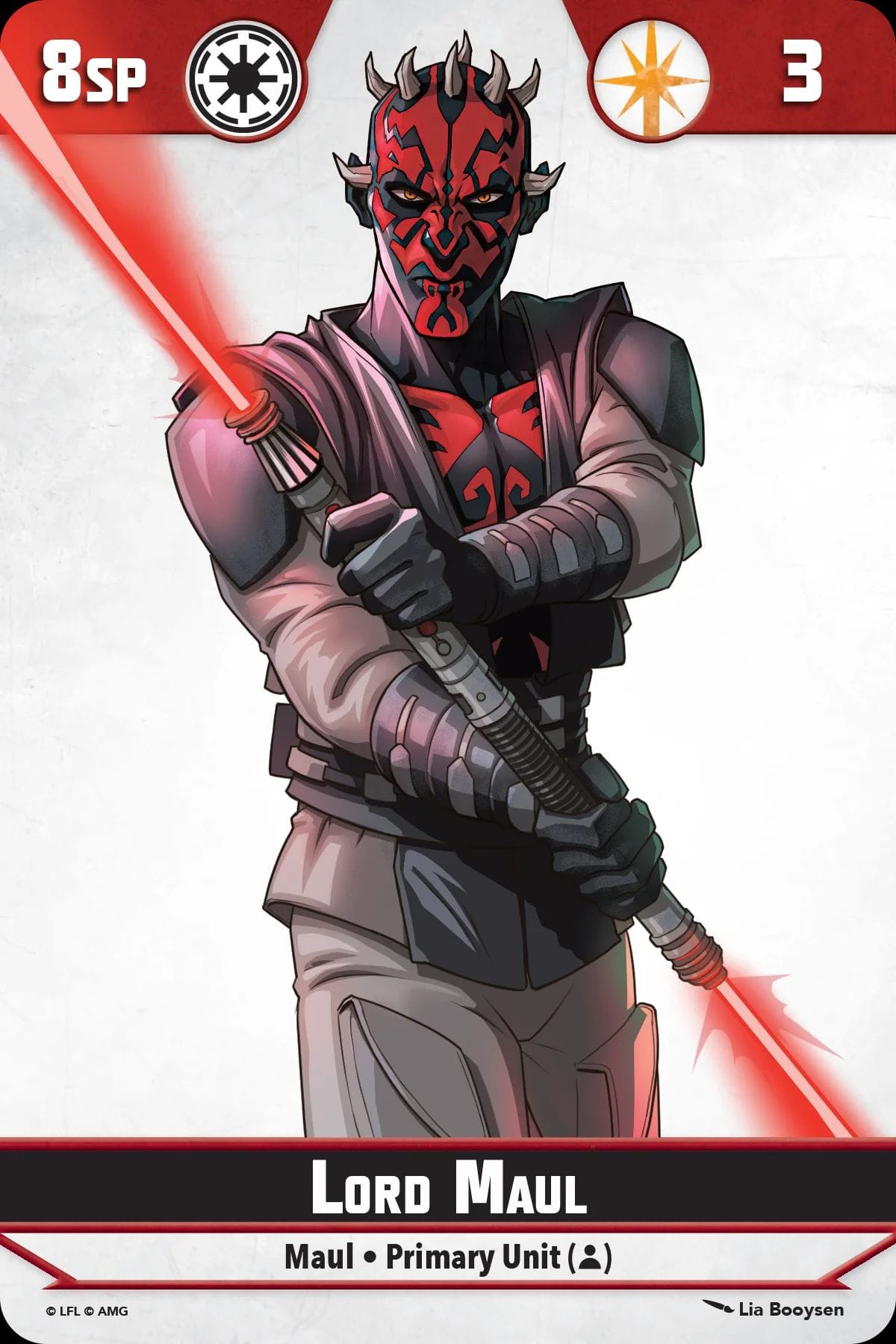
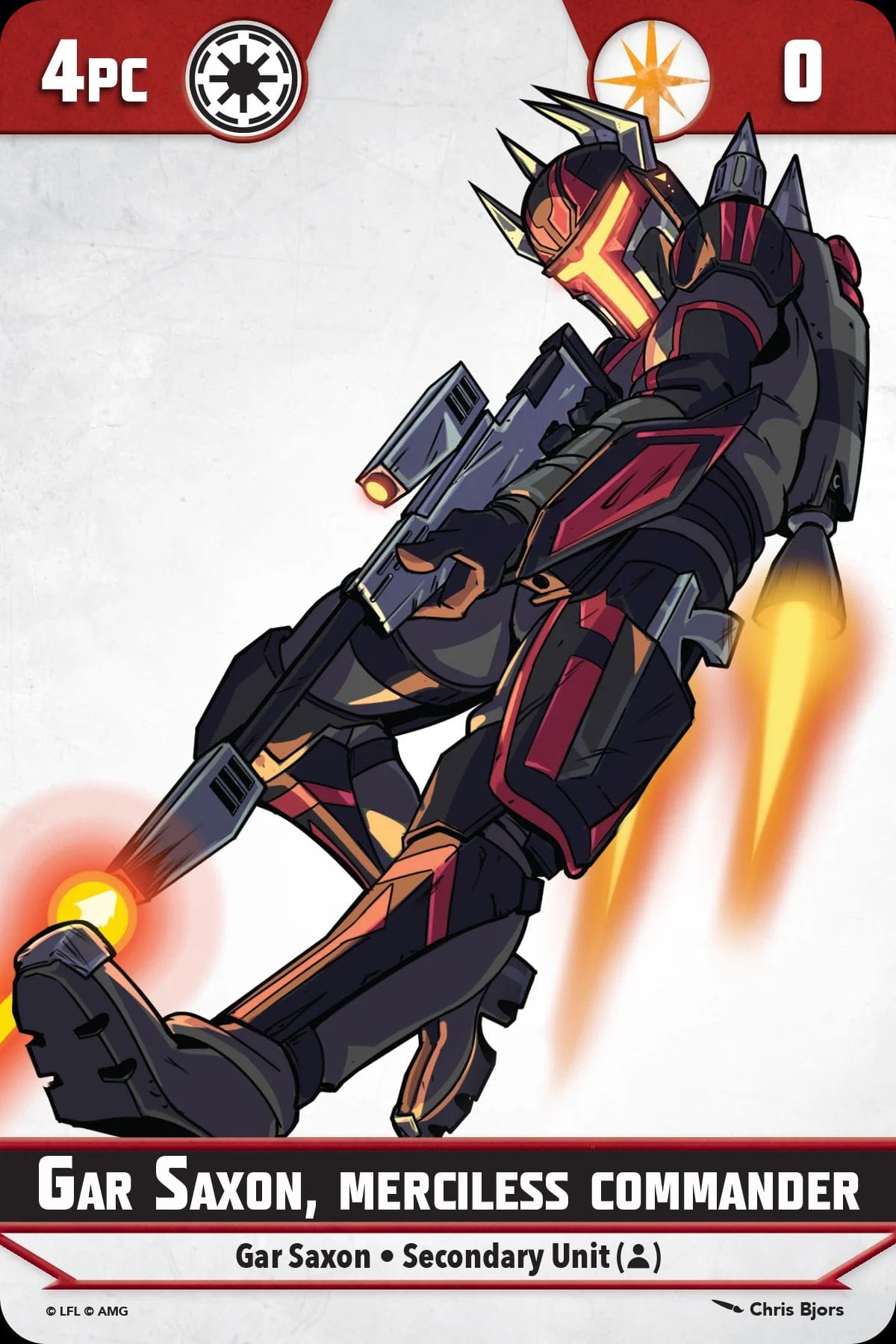
Regardless of which units you choose, you’ll have to assemble them first. You’ll need some nice sharp clippers, some plastic glue, and… an internet connection. The assembly instructions are, oddly, not included in the box. You’ll find the instructions for the core set and all expansions on the Atomic Mass Games website. Honestly, I have no idea why they didn’t put them in the box. It feels like an unnecessary barrier to getting started. At first, I thought it was a cost-saving effort, but every expansion comes with 4 copies of every card in different languages and a sheet that would easily fit the assembly instructions, but just directs you to the website… I don’t get it.
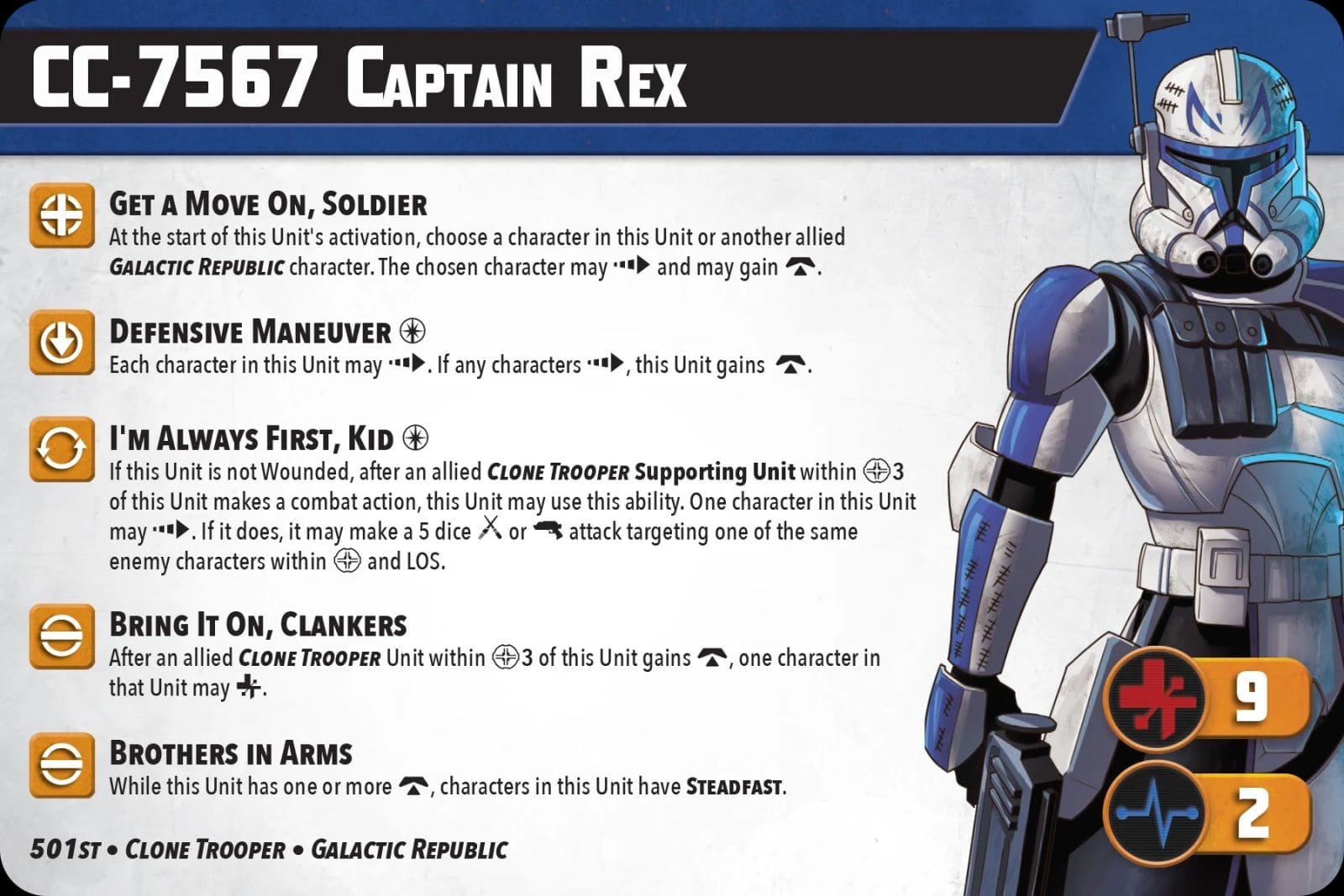
Anyway, once you find the instructions, assembly ranges from quick and easy to awful. Most units fall into the quick and easy category. It is important to pay attention to the instructions, as the order of operations does matter for a few. When you get to the droids (any of them), good luck. If you’re a Separatist Legion player, you’ll probably laugh at me, but assembling the droids was an awful experience. The joints are too small for the notches in the plastic to line up and hold them in place. Getting arms and legs to stay at the proper angles is a nightmare. I had success with a combination of sticky tack and instant set super glue, but they still didn’t come out perfectly. Plastic glue that fuses the pieces together is ideal for assembly but the already too small assembly notches on the droids get melted in a rounded mess that doesn’t help at all. Super glue is definitely the way to go for these guys. I don’t know how they could have made them any easier since droids just have thin limbs and small joints, but I definitely did not enjoy the assembly experience on them. Be prepared for some frustration and potentially glued-together fingers.
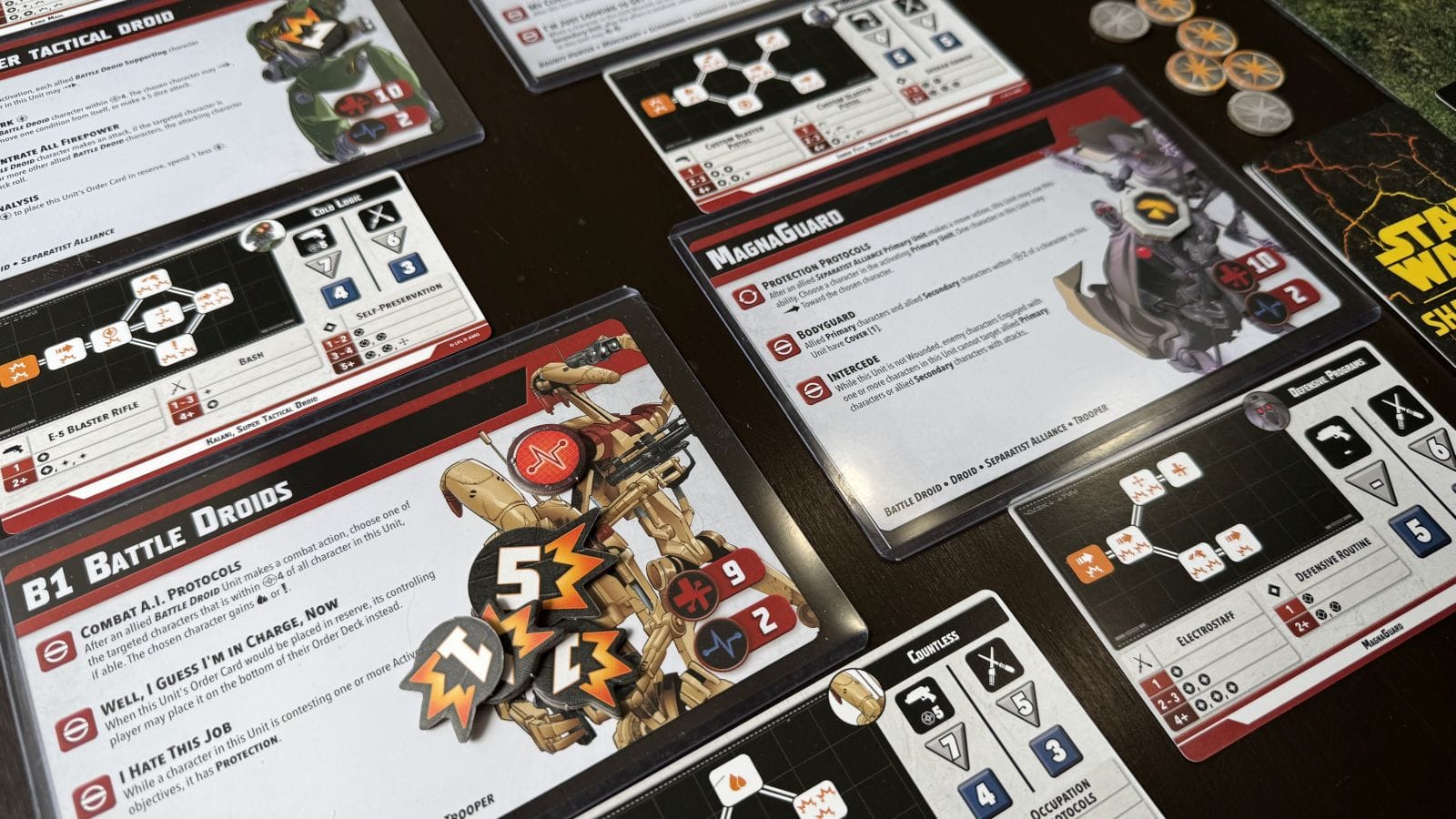
Now that you’ve assembled the minis, it’s time to play. Shatterpoint is played on a 3’x3’ battlefield that is best when filled with terrain. The core set comes with a set of terrain to get you started, but ideally, you’ll want to fill the board in some more to really take advantage of the cover rules and movement potential of characters. Elevation is critical to controlling objectives and affects line of sight and movement as well. The movement rules and unit abilities make the terrain a dynamic part of the game, not just a pretty decoration. It’s worth noting that all of the unit cards and combat trees will take up another couple of square feet of space, so a nice big table is pretty much a requirement.
To win the game, you’ll need to win two Struggles. The table is set with a 3x3 grid of objective tokens that will turn on or off depending on the active Struggle. Controlling an objective moves the Struggle one point towards your side of the tracker. Your opponent will move it back towards them for every objective they control on their turn. This creates a tug of war over objectives that gets faster and faster as momentum is added to the tracker by various means, shortening the total length.

Controlling an objective is done by having the most non-wounded characters contesting the objective. It’s pretty hard to actually kill a unit in Shatterpoint and remove it from the game, but wounding them is doable. When a unit is wounded, it essentially doesn’t count for anything anymore until its next activation, when it heals and becomes Injured. Injured units are back in the game and operate normally with the added penalty of their abilities that cost Force Points to use, costing an additional force. Since it’s hard to remove a unit from the board, the game gives you plenty of tools to move units around to try and get them off the objective. Force pushes and pulls, and various shoves are all useful to gain control of an objective when wounding or killing a unit isn’t an option.
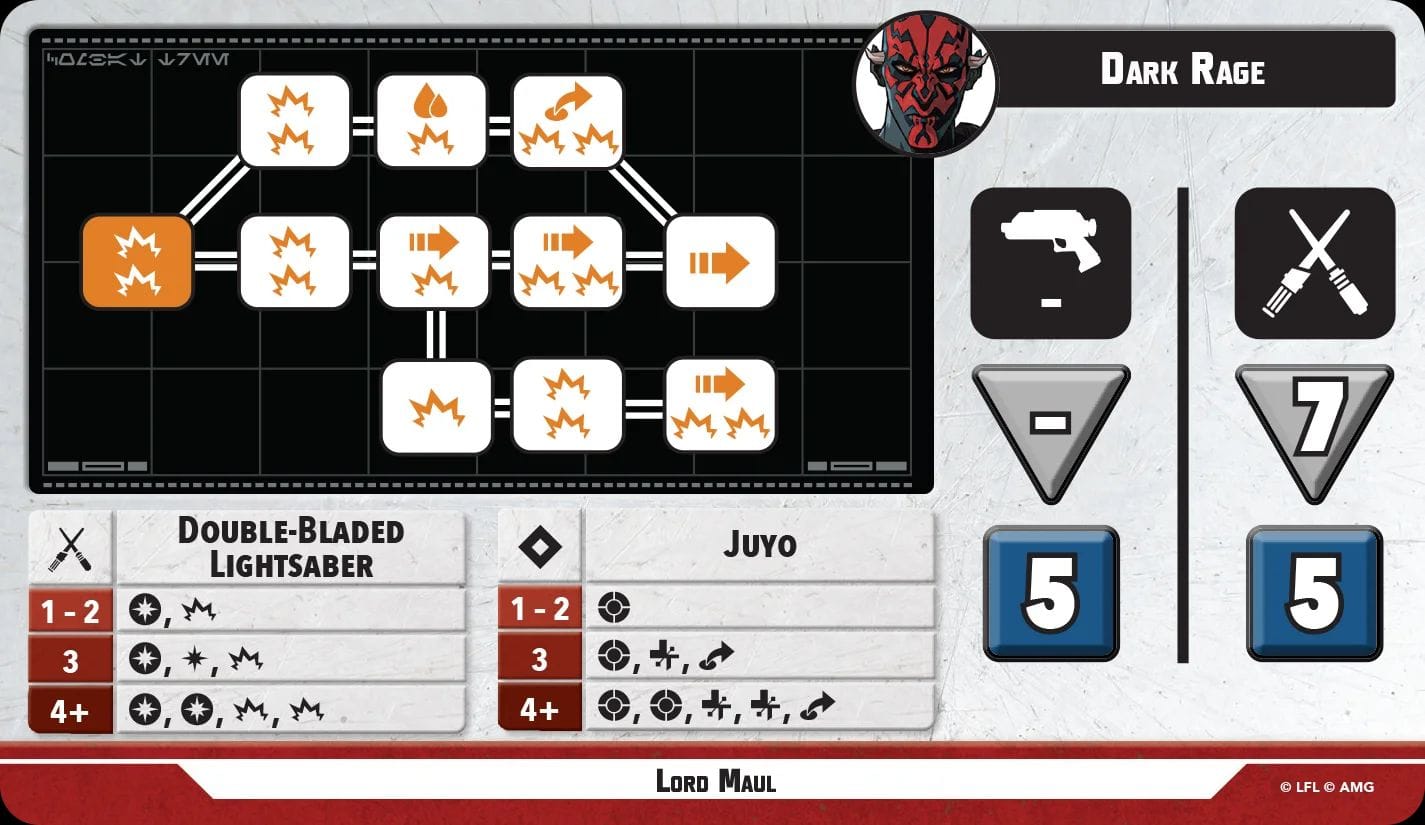
Combat in Shatterpoint is where the game really shines. You have your typical attack and defense dice, but they do so much more than just compare numbers. Both attack and defense dice feature success and failure symbols, but they also have Expertise symbols that let you activate additional abilities of your weapon or armor, modifying dice or even providing extra actions depending on how many you roll. Once you compare final results, for every hit that goes undefended, the attacker gets to activate a space on their combat tree. The combat tree determines what actually happens; dealing damage is only the beginning. As an example, Ashoka actually has two combat trees depending on which lightsaber form you choose to use. If she made an attack with four strikes going through, it could look something like: damage and shove the defender away, heal two, another damage and another shove, followed by two more damage and a jump for Ashoka. While this all may look complicated the first time you see it, it makes for very dynamic and engaging battles. The combat trees allow the characters to feel unique and are a really clever design tool to push thematic combat skill into the design without overburdening the game with a ton of unit-specific rules.
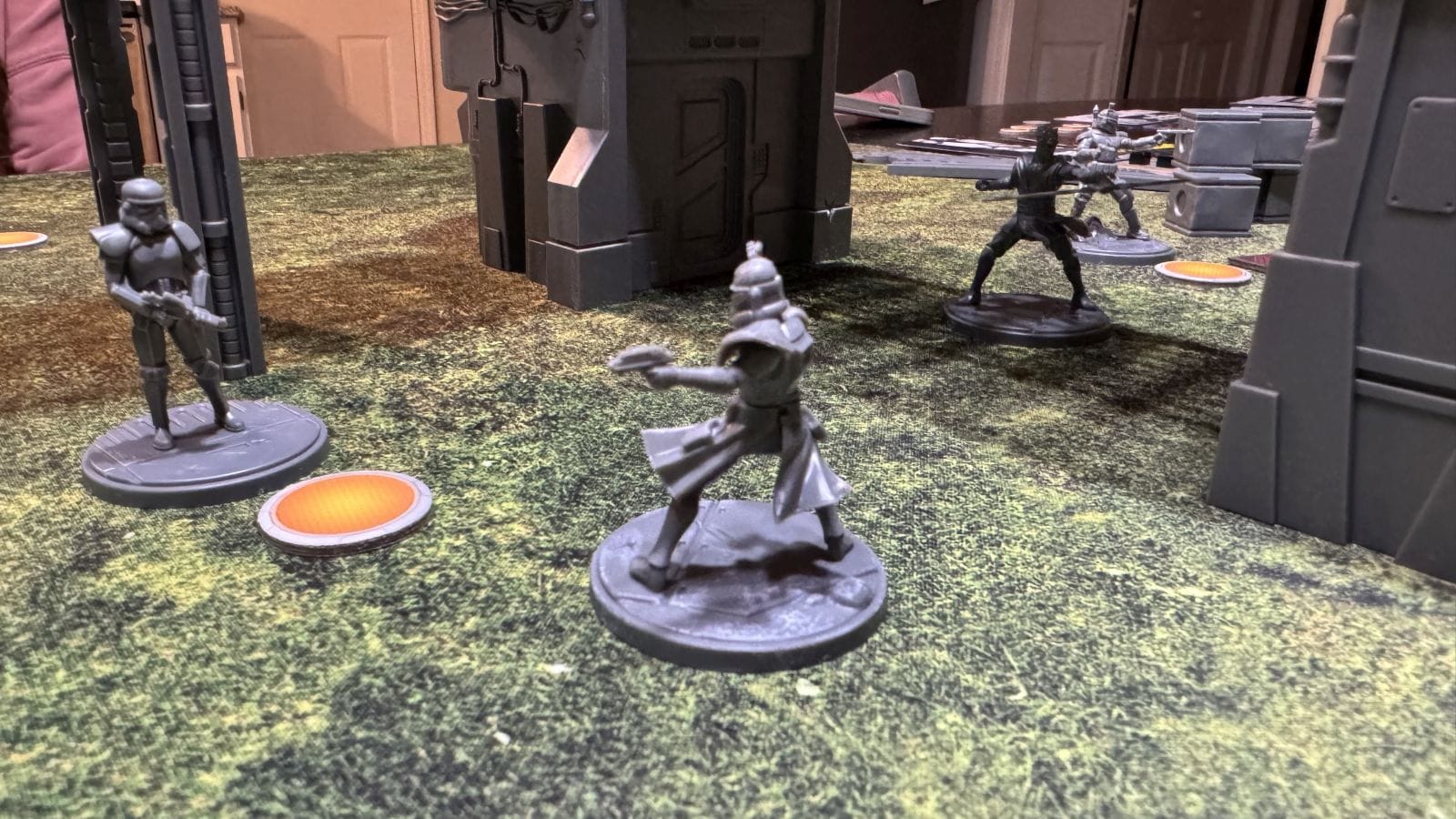
The turn structure in Shatterpoint uses random activations determined by a card draw. Each player has a deck of cards with every character in their Strike Team as well as a Shatterpoint card that acts as a wild. At the start of your turn, you flip a card and that is who you get to activate, though you do have the option to spend a force point to place a card in reserve and flip a new card if your reserve slot is open. There are pros and cons to this system. Removing most of the player choice for which character they have to activate adds a large element of randomness that may turn some players off. It can feel bad to not be able to respond to your opponent's play or reach an objective at a critical time because you simply didn’t draw the right character. On the other hand, the randomness adds to the fast-paced, chaotic battle theme that the game is trying to portray. Having to react and make the best choices with the tools at hand adds an interesting challenge and layer of strategy. It makes every action feel like it matters because you have to make the most of it. Full choice in who to activate can lean towards your best characters getting all the action, and supporting characters turns feeling like they don’t matter as much. Obviously, if you’re playing with a friend, you could easily choose to just ignore this system entirely and activate whoever you want. I think the challenge and extra strategy of when to place a card into reserve and who to use your Shatterpoint card on all add to the feel and flow of the game.
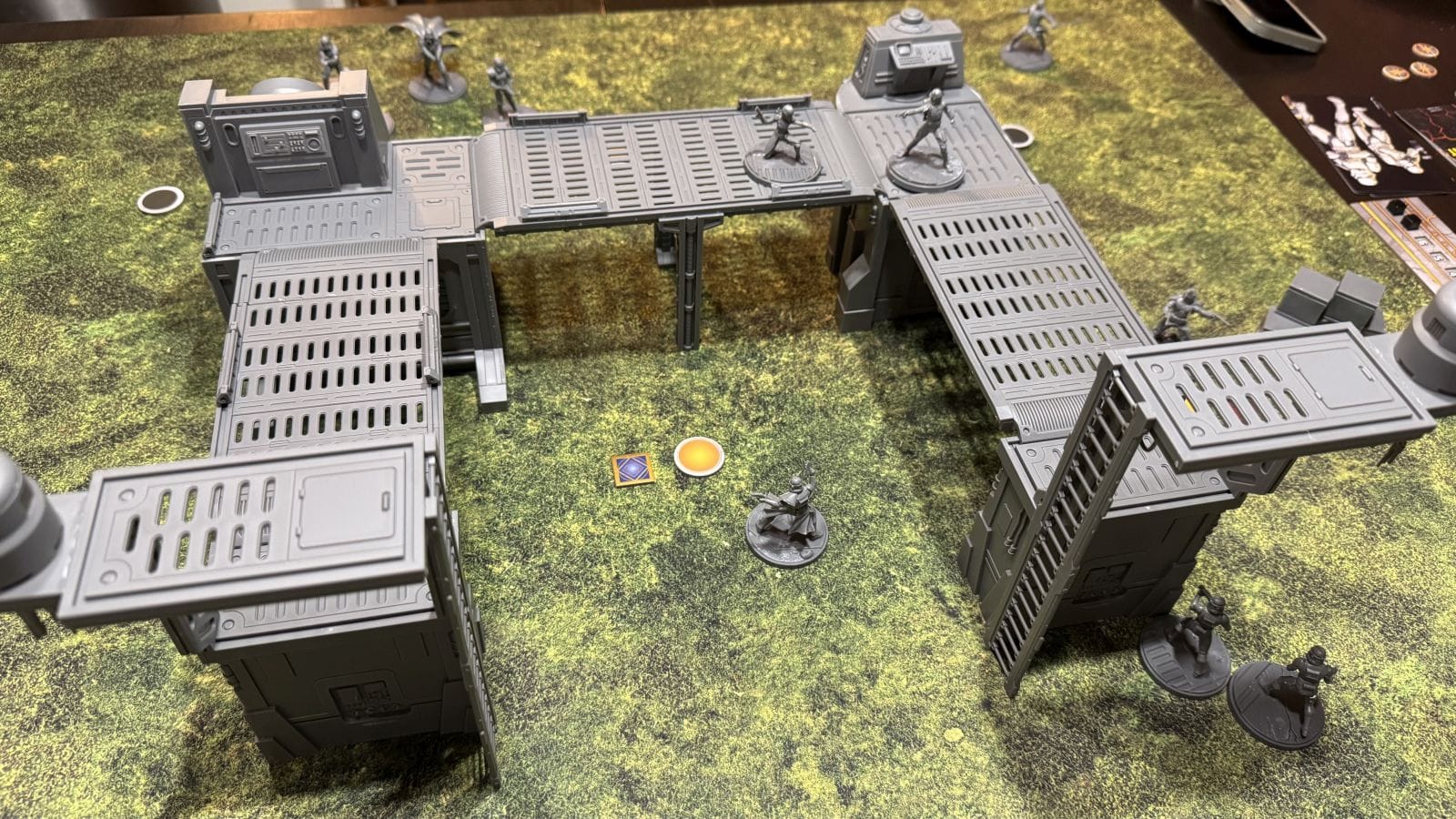
Shatterpoint is a game that rewards investment. I’m not talking about money (though like all minis games, it’s an expensive hobby), I’m talking about time. You can have fun casually playing the game and mixing up your squads for various what-if teams, but this game rewards experience and knowledge. A player who knows the abilities and synergies of their entire Strike Team and has built the team to exploit those synergies is going to have a huge advantage over a player who doesn’t. Playing the same team over and over again and mastering how that team wants to approach and win the game can be rewarding, but it takes playing that team over and over again. But to be “competitive,” you don’t just have to learn your team; you need to learn every character in the game. How does your team need to play against a Vader and Imperial Trooper team? What about Separatists with lots of droid firepower? Jedi that quickly engage and beat you down? You absolutely do not need to get that into it to have fun and enjoy Shatterpoint, but for those that want to dive in deep, you’ll be rewarded.
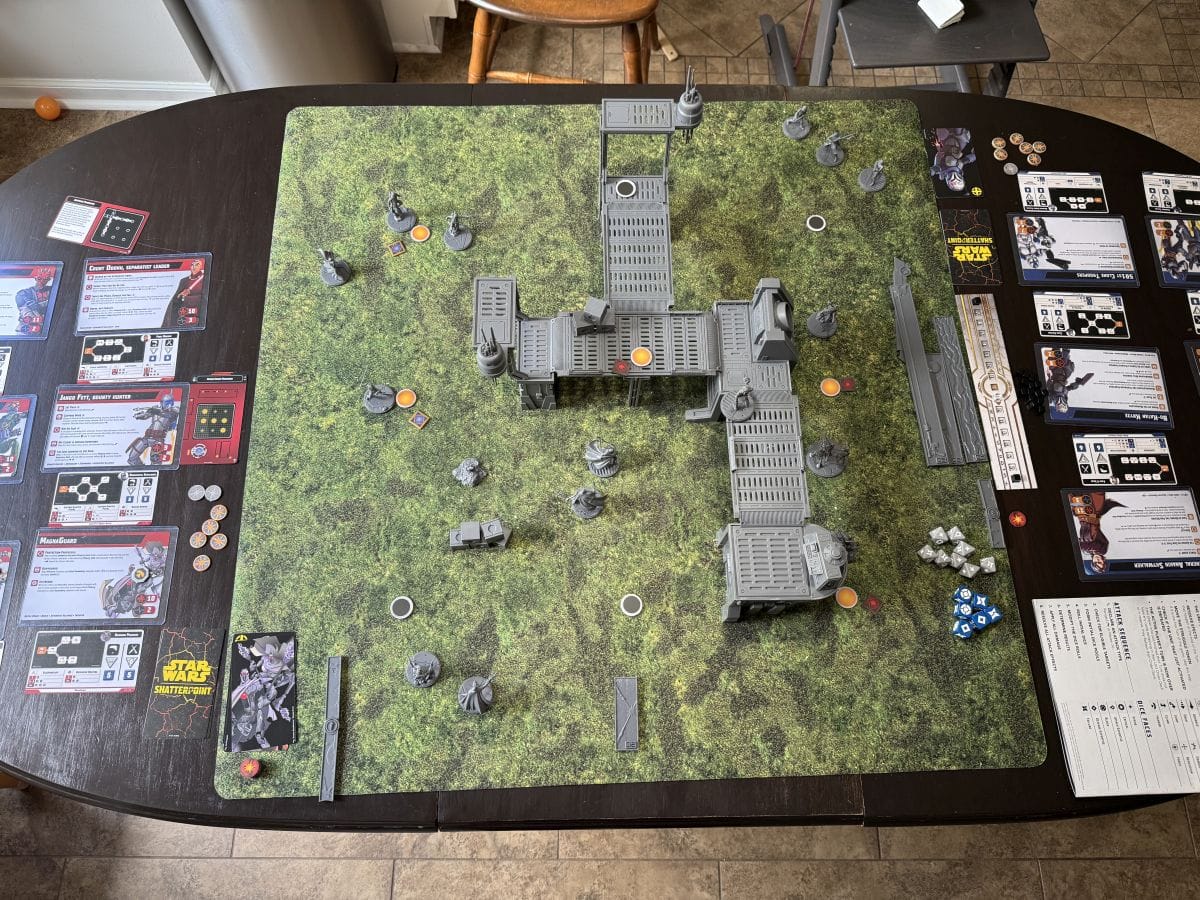
Speaking of money earlier, this is an expensive game. If you’re a seasoned miniatures gamer, you may not bat an eye, but for those new to the hobby or coming from the board game world, prepare for some wallet pain. The core set retails at $165, and expansion squads go for $50, though you can often find cheaper deals online or at your LGS. At that price, going in on a set with a friend isn’t a bad idea if you just want to try it out. Even better, find a group at your local game store and see if you can learn the game before you buy. I received this set from AMG for this review, but have already bought several expansions myself and wouldn’t hesitate to buy a core set if I didn’t have one. I already know this game is for me though. For me, the game is great and worth the price tag. Value is always subjective, so I really would recommend trying it out yourself first if you can.
Playing Shatterpoint is a blast. As a huge Star Wars fan, this game is everything I’ve wanted in a Star Wars skirmish game. The single-unit activation turns make the gameplay fast with very low downtime for each player. The focus on movement and manipulating yours and your opponent's positioning over just eliminating models feels like a puzzle and allows for really dynamic gameplay when combined with the combat trees. The potential combos you can pull off are amazing when they come together and make for big, exciting turns. If you’re prepared for the time and cost it takes to get into a miniatures game like this, Shatterpoint is a great choice, especially if you’re already a Star Wars fan. If you want to blow models off the board and hate randomness in games, you likely won’t have a good time. As for me, I can’t wait to dive deeper.
Star Wars: Shatterpoint
Excellent
Shatterpoint is a tabletop skirmish game that excels at playing into and making the most of its Star Wars theme. Gameplay is fast, dynamic, and full of combo potential that rewards player knowledge. It might have more randomness than some players prefer, but it provides a deep layer of strategy for those who can learn to deal with it. For Star Wars fans of tabletop miniatures games, it’s a must-play.
Pros
- The combat tree system is innovative and engaging
- Character design feels faithful to their origins
- Gameplay is fast and fun
Cons
- Droid assembly is a nightmare
- Substantial investment in time and money
- Table hog for a 3’x3’ game.
This review is based on a retail copy provided by the publisher.
